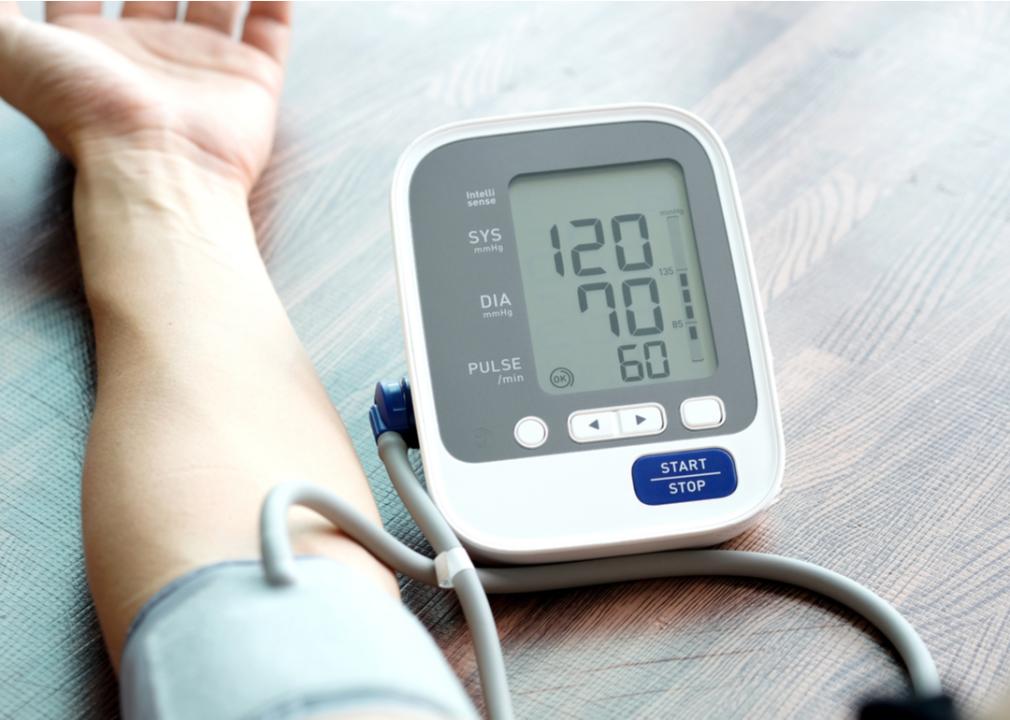10 ways to promote a healthier heart

Studio Romantic // Shutterstock
10 ways to promote a healthier heart
As the core of the cardiovascular system, our heart does quite a lot, pumping blood and oxygen throughout our bodies, which is vital to sustaining life. Having a healthy heart can prevent heart disease, the #1 cause of death in the U.S., which kills more than 650,000 people annually, with stroke being the fifth-leading cause of death in the nation.
There’s no specific cause of heart disease but there are risk factors such as smoking, remaining sedentary, and lifestyle choices that greatly increase chances of developing the condition. A nutrient-rich diet is one of the best ways to combat cardiovascular disease. The American diet and its obsession with salt certainly captured the attention of the U.S. Food & Drug Administration (FDA), which, for the first time, in October 2021, issued final guidance within the food industry to reduce sodium in packaged and prepared foods for the next two and a half years. This is an effort to help Americans limit their sodium intake as high sodium poses a higher risk for high blood pressure, which maximizes the risks for heart disease and stroke. Taking this initiative to push for reduced sodium in packaged foods could potentially prevent thousands of premature deaths and chronic illnesses in the future.
Thistle compiled a list of how people can support a healthy heart, citing research from the Centers for Disease Control and Prevention (CDC) and the American Heart Association. Read on to see some ways you can take care of your body and be on your journey to better heart health. It’s never too late to start.
![]()

FabrikaSimf // Shutterstock
Reduce your sodium consumption
Sodium, a mineral found in many of our favorite foods, can be challenging to avoid. Sodium is frequently found in packaged foods and meals from restaurants. The body uses sodium for better muscle and nerve functionality. A high-sodium diet regularly, however, causes the body to retain excess water and, as a result, the organs have to work harder.
This increases the risk for high blood pressure, which damages the arteries, minimizing the oxygen and blood flow, and leading to heart disease. Some methods to limit sodium intake include eating more fruits and vegetables, opting for fewer sauces, mixes, and “instant” meal products, and simply asking for nutrition information when dining out.

miroha141 // Shutterstock
Avoid saturated and trans fats
Saturated fats, known as “unhealthy” fats, are found in animal-based products such as beef, pork, and dairy items like milk and butter. A diet rich in saturated fats can lead to high cholesterol and put people at risk for heart disease. Trans fat is considered the worst type of fat because it increases bad cholesterol and lowers good cholesterol.
Some ways to limit consuming saturated fats and trans fats include watching the intake of fried foods, desserts like cookies and muffins, and other items baked with hydrogenated vegetable oils.

Day Of Victory Studio // Shutterstock
Limit added sugar
Beverages such as soda, energy drinks, coffee, and sweetened teas all contain added sugars. Too much sugar places people at risk for chronic illnesses such as diabetes, cardiovascular disease, and kidney disease. The American Heart Association suggests that men do not consume more than 9 teaspoons (36 grams) per day of added sugar and limits most women and children over 2 years old to 6 teaspoons (25 grams) daily. Overall, adults average 17 teaspoons of sugar daily.

Monkey Business Images // Shutterstock
Incorporate more whole foods into your diet
Whole foods are processed minimally or not at all and are free from additives or artificial ingredients. Fresh fruits and vegetables, whole grains, and unsalted nuts and seeds are some examples of whole foods. When cooking, the American Heart Association suggests using oils with fewer than 4 grams of saturated fat and avoiding hydrogenated oils and trans fats. Healthier oils include olive, sunflower, and soybean, all of which contain fewer saturated fats.

fizkes // Shutterstock
Manage your stress levels
Believe it or not, there is such a thing as “good stress.” A happy, exciting event such as a marriage or job promotion can cause stress just as much as a diagnosis of an illness or a family crisis that can bring “bad stress.” Stress impacts all areas of the body and affects everyone differently.
Stress often manifests physically through aches and pains, muscle tension, and high blood pressure. It causes harmful reactions such as an irregular heart rate and a decrease in blood flow to the heart. Relaxation techniques such as meditation or listening to music can help lower stress levels. It also helps to exercise regularly and carve out quality time with loved ones.

Halfpoint // Shutterstock
Exercise regularly
Regular exercise, or any type of physical activity for that matter, is important for health overall, but especially heart health. Exercise improves circulation and cholesterol, lowers blood pressure, and helps to keep blood sugar in check. For adults, the Surgeon General suggests incorporating exercises like brisk walking and bicycling into your routine on a weekly basis for better heart health.

Nopphon_1987 // Shutterstock
Don’t smoke
Smoking plays a huge role in the cause of cardiovascular disease, causing 1 in 4 deaths. Smoking has many effects on the heart such as causing a rise in blood pressure and an increase in plaque in blood vessels. Secondhand smoke—when smoke is inhaled by someone who isn’t smoking—can also cause strokes and serious conditions like heart disease.

Me dia // Shutterstock
Check your blood pressure at home
It’s not always convenient to go to the doctor’s office, but luckily, at-home digital blood pressure monitors give accurate readings (as long as the arm is held straight).
Some people may keep a logbook to record blood pressure readings: It’s best to record anything significant that took place prior to the reading, such as a stressful moment at work or exercising a few minutes before. Over the course of a few days or weeks, it’s beneficial to discuss the readings with your doctor.

skipper_sr // Shutterstock
Schedule regular health screenings
The stethoscope is a device that allows physicians to listen to the sounds of your heartbeat as well as those of the lungs. By listening to these sounds, a doctor can determine if there’s a heart murmur or irregularity in the lungs. Regular health check-ups are important as they can help detect health issues early and before they become serious. Some key screenings for examining cardiovascular health include monitoring blood pressure, cholesterol, blood glucose levels, and body weight.

JohnKwan // Shutterstock
Understand your family’s health history
Family health history is an important factor in determining whether a person has a higher probability of developing common health conditions such as heart disease or hypertension. These chronic conditions are often influenced by genetics, environmental, and lifestyle choices.
If more than one close family member has or had a specific disease, you have a greater chance of developing that same health issue. This doesn’t mean you will automatically have the same disease, it just means your chances of having the condition are higher. If you’re unsure of your family’s health history, start with asking your immediate relatives such as your parents, siblings, and grandparents.
This story originally appeared on Thistle
and was produced and distributed in partnership with Stacker Studio.
